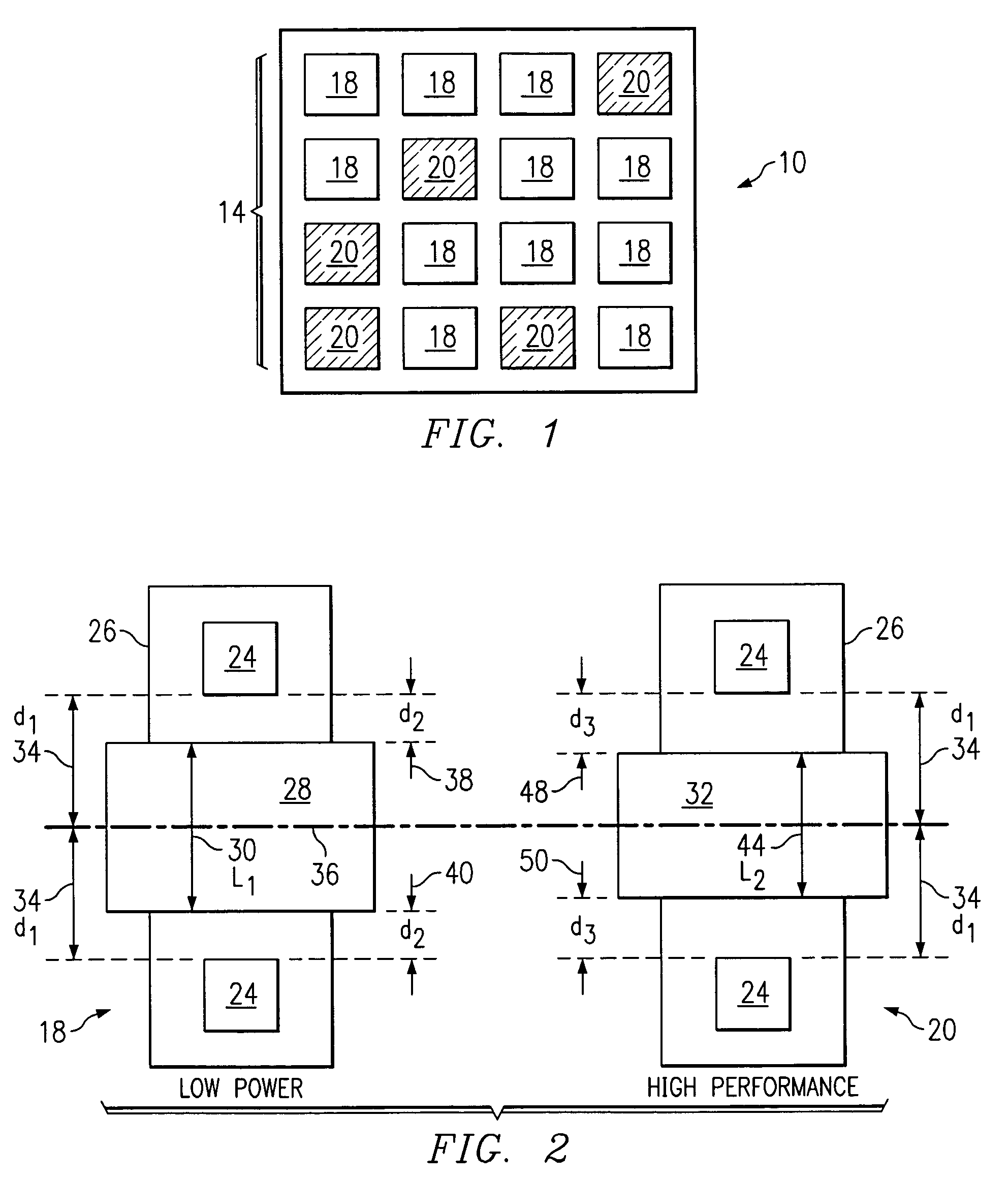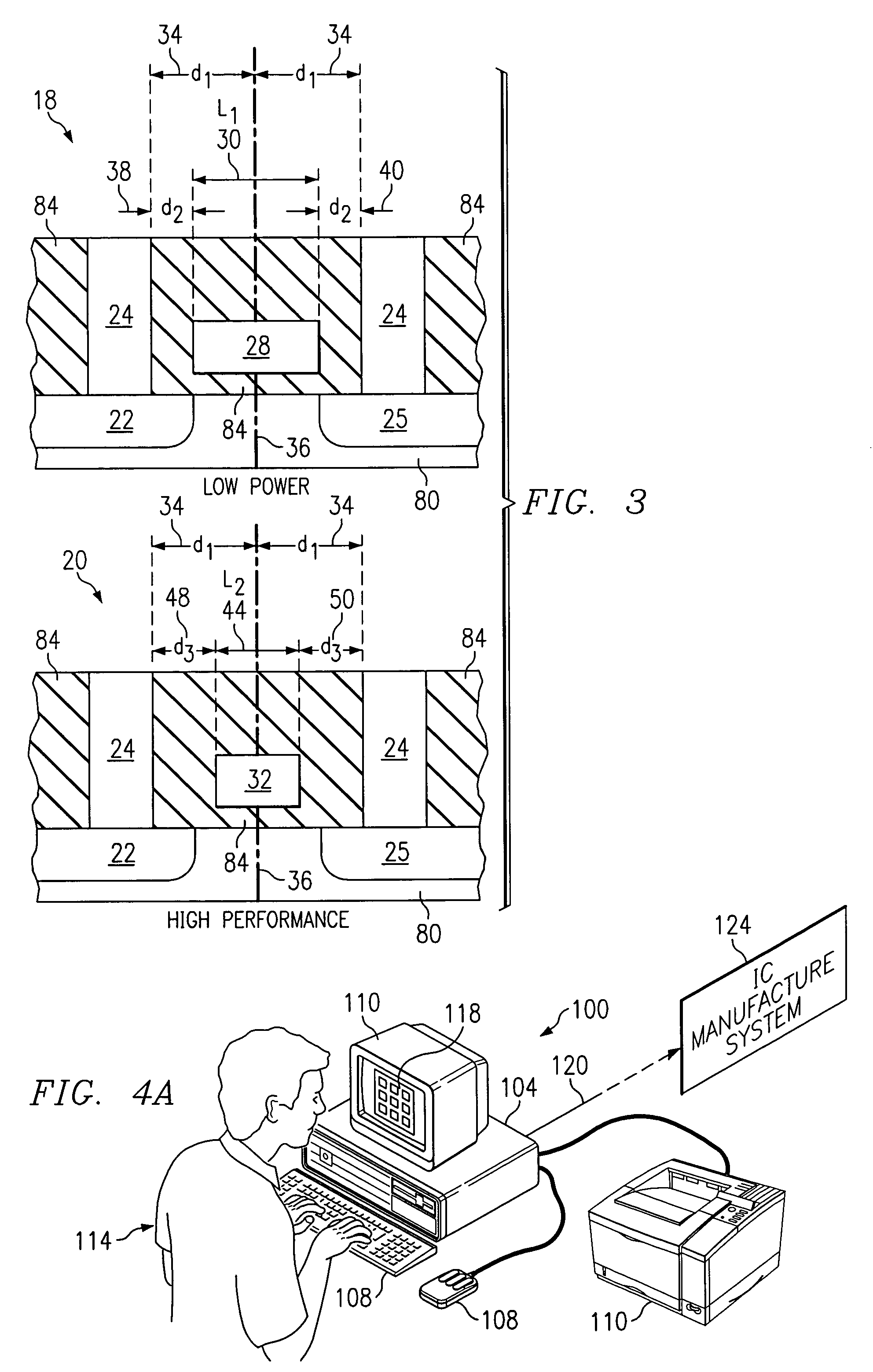Integrated circuit cells
a technology of integrated circuits and cells, applied in the field of integrated circuit cells, can solve the problems of degrading the cell performance, unable to benefit from the selective use of low power cells, and inability to combine low power cells with high performance cells in certain ics, etc., to achieve simplified design and manufacturing processes, reduce the power consumption level of integrated circuits, and simplify the process of switching from high performance to low power cells.
- Summary
- Abstract
- Description
- Claims
- Application Information
AI Technical Summary
Benefits of technology
Problems solved by technology
Method used
Image
Examples
Embodiment Construction
[0015]Embodiments of the invention are best understood by referring to FIGS. 1 through 5 of the drawings, like numerals being used for like and corresponding parts of the various drawings.
[0016]FIG. 1 illustrates a block diagram of an embodiment of an integrated circuit 10 having a plurality of cells 14. A “cell” refers to a specific layout of a set of elements, such as an interconnection of transistors to perform a logic function. A cell may include one or more transistors. Examples of cells 14 include a 3-input NAND or a flip-flop. Each cell 14 may have different levels of performance and leakage current. For example, as illustrated in FIG. 1, cells 14 may include low power cells 18 and high performance cells 20. A “low power cell,” such as low power cell 18, is a cell that has one or more features for reducing quiescent leakage current (“IDDQ”) in exchange for degraded performance of the cell. An example of such a feature is a gate having a relatively longer length, which narrows...
PUM
 Login to View More
Login to View More Abstract
Description
Claims
Application Information
 Login to View More
Login to View More - R&D
- Intellectual Property
- Life Sciences
- Materials
- Tech Scout
- Unparalleled Data Quality
- Higher Quality Content
- 60% Fewer Hallucinations
Browse by: Latest US Patents, China's latest patents, Technical Efficacy Thesaurus, Application Domain, Technology Topic, Popular Technical Reports.
© 2025 PatSnap. All rights reserved.Legal|Privacy policy|Modern Slavery Act Transparency Statement|Sitemap|About US| Contact US: help@patsnap.com



